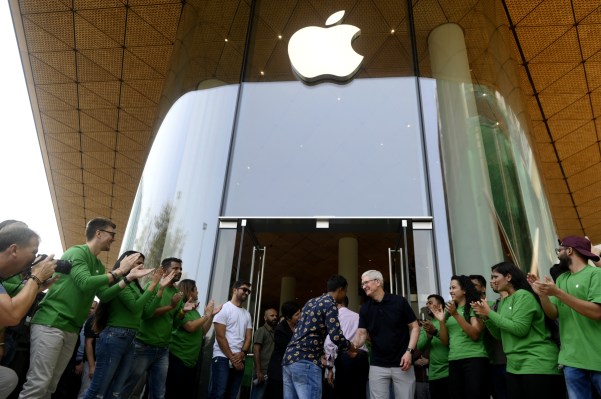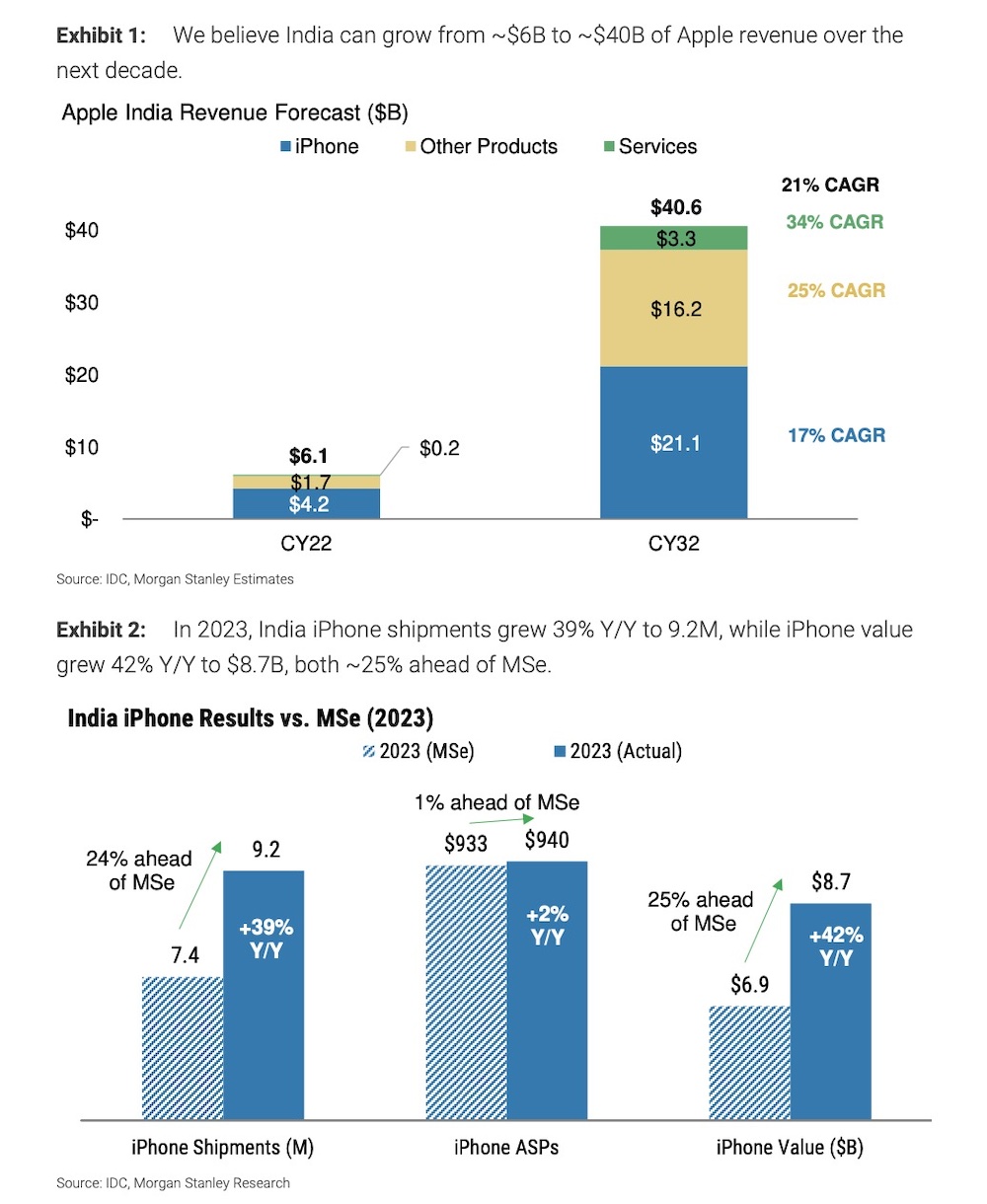[ad_1]

Apple’s long-term bet on India is starting to pay off. Morgan Stanley said in a note on Friday that its iPhone sales in India rose 42% year over year to $8.7 billion in 2023.
iPhone shipments in India will increase by 39% from the previous year to 9.2 million units in 2023, making it the fifth largest smartphone market for iPhone. Morgan Stanley added that India’s iPhone business is now larger than any independent country in the European Union.
“This means India will account for 4% of iPhone shipments and revenue in 2023, up from 3% in 2022 and 1% five years ago. “This compares to iPhone shipments in China, which accounted for 20% of units and sales (down 1-2 percentage points year over year, respectively),” the analysts wrote.
“Ultimately, this means that India as an independent market is still not large enough to offset the decline seen in the Chinese market today, but if China’s iPhone shipments remain flat and India follows the same trajectory. If India continues to grow, India will be at the top of the world.” By 2027, the iPhone market will be bigger than China. ”

iPhone growth in India is being driven by increasing consumer demand for premium devices with more storage capacity, rather than the latest models. The average iPhone sold in India last year had about 260GB of memory, a 26% increase compared to 2022, according to Morgan Stanley. The average selling price (ASP) of iPhone in India will increase by 2% year-on-year to $940 in 2023.
According to data from research firm IDC cited by Morgan Stanley, the top five iPhone models shipped in the country are iPhone 13, iPhone 14, iPhone 14 Plus, iPhone 14 Pro, and iPhone 15, which account for 86% of total sales. %. iPhone ASP in India is $940, which is still about 10% below the global average of $1,045.
Apple sees India as a key growth driver going forward and opened its first two retail stores in the country last year. The company is also moving iPhone manufacturing to the South Asian country. Morgan Stanley expects the tech giant’s revenue in India to reach $40 billion by 2032.
[ad_2]
Source link


